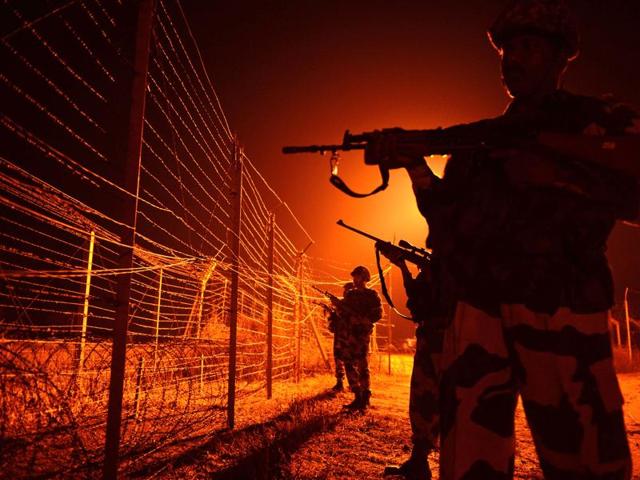Pak won’t reverse seven decades of anti-India policy without diplomatic process
The mood today will be celebratory. Much of the Indian public believes that decades of “strategic restraint” are drawing to a close. There will be an impact on the full gamut of bilateral relations, from trade to regional cooperation
In the hours of the Uri strike that killed 18 Indian soldiers, BJP leader Ram Madhav demanded “for one tooth, the complete jaw”. India’s “surgical strikes” on Wednesday night were surely only a tooth – barely a few kilometres across the Line of Control (LoC) – but they represent one of the most important changes in India’s military posture to Pakistan in over a decade.

Contrary to those who believe that history began in May 2014, this is not the first time that India has attacked targets on the Pakistani side of the LoC. Such assaults were relatively commonplace in the AB Vajpayee years, during the latter, turbulent stage of the insurgency in Kashmir. Journalist Praveen Swami has reported a string of retaliatory Indian raids across the LoC from the 1990s through the 2000s. He gives one example of a massacre of 22 civilians at Bandala in March 1998 by “irregulars backed by Indian special forces”, in retaliation for an earlier massacre of Hindus. These details are contested, but it is beyond doubt that the LoC was not sacrosanct. Those who served as brigade commanders during Operation Parakram (2001-02) have also remarked, coyly, that they were not sitting idly in their posts during that standoff.
Read: Army’s surgical strikes inflict terrorist casualties across LoC
The novelty here is not that India struck. It is that it chose to announce its operation with great fanfare. The hastily convened Cabinet Committee on Security set the tone, and the unusual pairing of the Director General Military Operations and ministry of external affairs spokesman underlined the strategic importance of the announcement that followed. India’s previous raids were instances of tacit signaling between the frontline military forces, with little oversight from the top brass and the foreign ministry out of the loop. They sent messages to Pakistan’s military, without causing Pakistan to lose face in a way that would set in motion a spiral of escalation. The downside of clandestine retaliation was that the Indian public was rarely privy to these goings-on at the LoC, beyond the odd leaked snippet.
India’s decision to go public has advantages and drawbacks. It allows the government to claim vindication for its tough rhetoric. The Army has, as it promised, responded at a time and place of its own choosing. Those criticising the Modi government for talking loudly but carrying a small stick have been temporarily quieted (though has their appetite been whet?). Even the Congress, reliably a force for mindless opposition to nearly everything the government does, has read the tea-leaves, with Sonia Gandhi expressing rare public solidarity with “actions to protect country’s security”. More broadly, a public strike creates a precedent in a way a private one does not, making it somewhat easier for this or a future government to repeat the action. India may also be probing Pakistan’s thresholds for action. If the consequences of this strike are limited, the next one may be deeper or wider, perhaps even across the International Border. And if it is true that an Indian drone recorded footage, the longer-term implications for armed drones are self-evident.
Read: We stand with govt on actions to ensure country’s security: Sonia
Publicity also carries costs. While Pakistan is, at the time of writing, denying that any raid took place, it will eventually have to contend with reality – not least if the Modi government chooses to release what it claims is video evidence. The Pakistan army will have no choice but to respond forcefully. The evacuation of Punjab border villages on Thursday suggests that India expects to face an intensification of shelling along the LoC. But we may also see encouragement of further Uri-like attacks, or even attacks in Indian cities beyond Jammu and Kashmir and on Indian interests in Afghanistan. We do not yet know whether Pakistani troops were killed – the DGMO’s reference to “those trying to shield” terrorists suggests so – but this will also influence Rawalpindi’s calculus.
Diplomatically, India appears to have prepared its ground well. Having successfully corralled three of its neighbours to boycott the SAARC summit in November, Pakistan was already reeling. Then early on Thursday morning, perhaps while Indian force were returning across LoC, details of a conversation between Indian National Security Adviser (NSA) Ajit Doval and his American counterpart Susan Rice were released, with Rice demanding Pakistani action against terrorist groups. Whether or not the US was informed, the impeccable timing sent its own signal. China, too, has remained muted over the plight of its “all-weather” ally. Without this diplomatic space, Indian leaders might not have taken this risk.
Read: India’s claim of surgical strikes ‘fabrication of truth’, says Pakistan army
The mood today will be celebratory. Much of the Indian public believes that decades of “strategic restraint” are drawing to a close. There will be an impact on the full gamut of bilateral relations, from trade to regional cooperation. But, as Lieutenant General HS Panag reminded us on Thursday, “war is a game of chess”. And the fundamental dilemma remains: While India can impose a modest cost on terrorist groups and their supporters, any game-changing punishment carries with it the risk of a larger war that would damage India’s broader economic and diplomatic interests. The brutal fact is that Pakistan will not reverse seven decades of policy without a diplomatic process. If we may draw some hope, it is that the carnage of 1999-2002 was followed by the backchannel of diplomacy of 2004-07. As the stick grows, so too should the carrot.
Shashank Joshi is senior research fellow, Royal United Services Institute, London
The views expressed are personal





